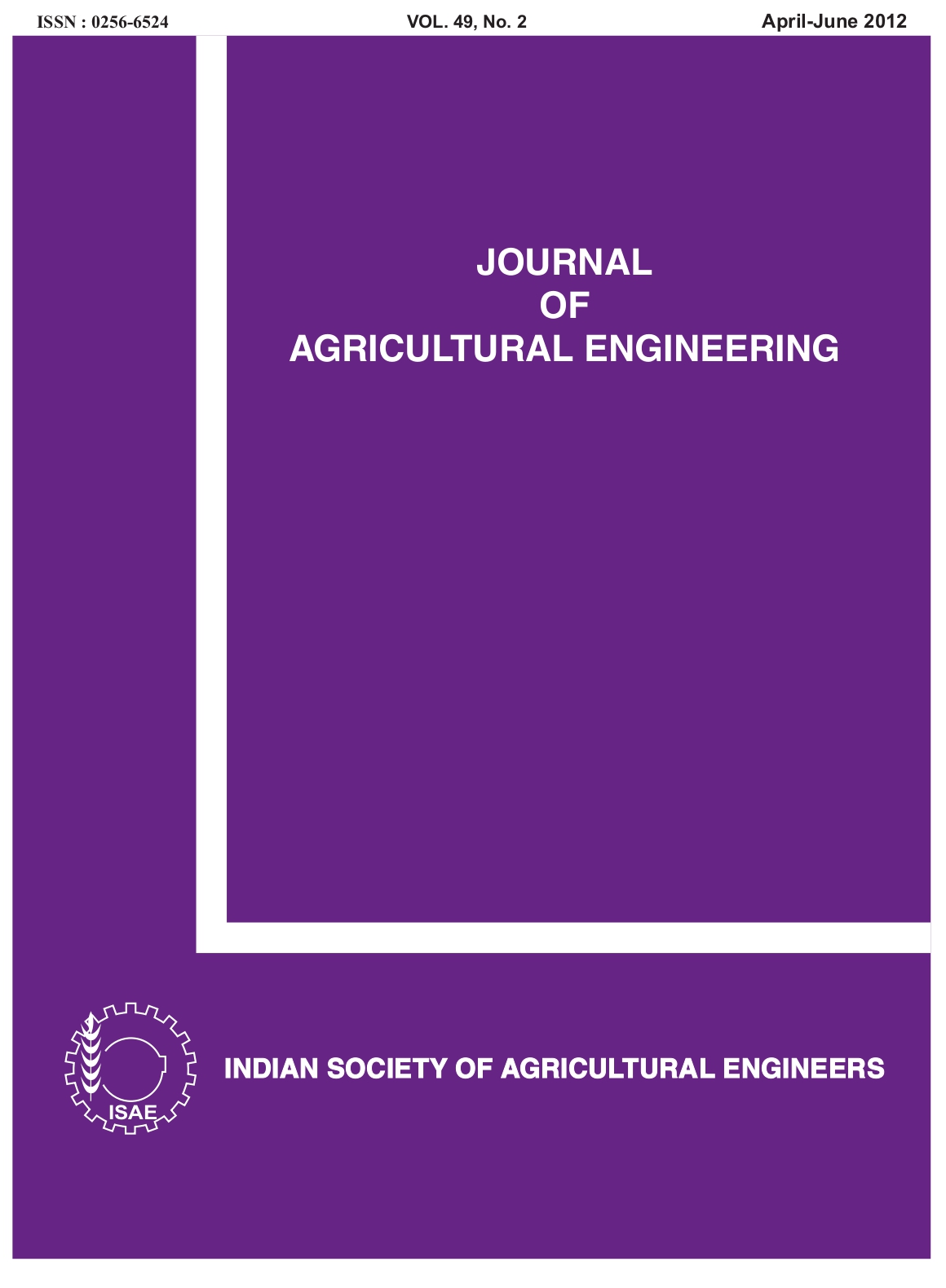Anthropometry of Farm Workers of Kashmir Region of India for Equipment Design
DOI:
https://doi.org/10.52151/jae2012492.1472Keywords:
Anthropometry , body dimensions, hand tools , Kashmir regionAbstract
Anthropometric data (25 body dimensions, relevant to design of farm machinery) of 610 farm workers was collected from Kashmir region of India. The comparison between the Kashmir region data and different regions of India and six foreign countries is presented. There were significant differences in weight, stature and other body dimensions between the populations. Kashmiri women were taller by 31 mm as compared to south Indian female workers, but had differences in hand length. No differences existed between stature eye height, hand length and inside grip diameter among females from Kashmir and North-eastern regions. Kashmiri women were heavier and fatter as compared to other selected regions of the country. Indian men were shorter by 75 mm as compared to Americans. The muscular strength (elbow flexion) of Indian workers was lower (241 N) as compared to Americans (270.7 N). Similarly, hand grip strength of Indian workers was lower (301.8 N) than Americans (398 N). Application of data in design of agricultural equipment is demonstrated.References
Chakrabarti D. 1997. Indian anthropometric dimensions for ergonomic design practice. National Institute of Design, Ahmedabad, India.
Dewangan K N; Owary C; Datta RK. 2008. Anthropometric data of female farm workers from north eastern India and design of hand tools of the hilly region. Int. J. Ind. Ergon., 38, 90-100.
Gite LP; Yadav BG. 1989. Anthropometric survey for agricultural machinery design. Appl. Ergon., 20(3), 191-196.
Gite LP; Chatterjee D. 1999. All India anthropometric survey of agricultural workers: proposed action plan. All India Coordinated Research Project on Human Engineering and Safety in Agriculture, Central Institute of Agricultural Engineering, Bhopal, India.
Gite LP. 1999. Optimum handle height for animal drawn mouldboard plough. Appl. Ergon., 22(1), 21-28.
Gite LP; Tiwari PS; Babu VB. 2005. Anthropometric and strength survey of agricultural workers of Madhya Pradesh. Annual progress report AICRP on Ergonomics and safety in Agriculture, CIAE, Bhopal.
Grandjean E. 1988. Fitting the Task to the Man. Taylor and Francis, London.
Helander Martin.1996. A Guide to the Ergonomics of Manufacturing. Taylor and Francis, London.
Hertzberg HTE. 1968. The conference on standardization of anthropometric techniques and terminology. Am. J. Phys. Anthropol., 28(1), 1–16.
ISO 7250. 1996. Basic Human Body Measurements for Technological Design. International Standard Organization, Genava.
Kathervel K; Sivakumar SS; Ramesh D. 2005. Collection of anthropometric and strength data of male and female agricultural workers of Tamil Naidu. Project Report, All India Coordinated Research Project on Human Engineering and Safety in Agriculture, TNAU Coimbatore Centre.
Kroemer KHE. 1983. Engineering anthropometry: work, space and equipment to fit the user. In: Oborne D; Gruneberg M (Eds.), The Physical Environment at Work, Wisley, London.
Lin YC; Wang MJ; Wang EM. 2004. The comparisons of anthropometric characteristics among four people in East Asia. Appl. Ergon., 35, 173-178.
Liu WCV; Sanchez-Monroy D; Parga G. 1999. Anthropometry of female aquiladora workers. Int. J. Ind. Ergon., 24, 273–280.
NASA. 1978. Anthropometry for designer. In: Anthropometric Source Book, vol. I, NASA Reference Publication 1024, National Aeronautics and Space Administration, Washington.
Nag PK; Goswami A; Ashtekar SP; Pradhan CK. 1988. Ergonomics in sickle operation. Appl. Ergon., 19(3), 233-239.
Pheasant S. 1998. Bodyspace: Anthropometry, Ergonomics and the Design of Work. Second ed., Taylor & Francis, London.
Philip GS; Tewari VK. 2000. Anthropometry of Indian female agricultural workers and implication on tool design. Agric. Mechanization in Asia, Africa and Latin America, 31(1), 63-66.
Power AG; Aware VV. 2005. Anthropometric survey on agricultural workers of Konkan region of Maharashtra state for efficient and safe design of agricultural equipment. Annual Project Report, ICAR funded project.
Pradhan CK; Goswami A; Gosh SN; Nag PK. 1987. Ergonomic design and physical evaluation of spade work. In: Proceedings of the International Symposium on Ergonomics in Developing Countries, Jakharta, Indonesia.
Tewari VK. 1985. Development of weeder from engineering and ergonomic considerations. Unpublished PhD Thesis, Department of Agricultural and food Engineering, Indian Institute of Technology, Kharagpur, India.
Tewari VK; Ailavadi R; Dewangan KN; Sharangi S. 2007. Rationalized database of Indian agricultural workers for equipment design. Agric. Eng. Int., The CIGR Ejournal, Manuscript MES 05 004, IX.
Wang EM; Wang M; Yeh W; Shih Y; Lin Y. 1999. Development of anthropometric work environment for Taiwanese workers. Int. J. Ind. Ergon., 23, 3-8.














